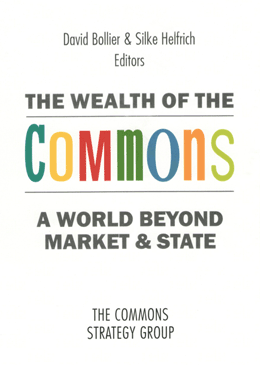“The Pyrenees, they are not all that high up – their outlines are gently curved, sharp ridges few and far between, and all the peaks are rounded. It seems like music frozen in place in this high country” (Kurt Tucholsky, celebrated German journalist and author, 1927).
We are standing on the Col de Peyreget, where a small sign says we are 2,320 meters above sea level. Not all that high, but I am short of breath nonetheless. Presumably not because of the mountain, but because of gravity. I cannot see the rounded mountaintops, either: they are dozing behind the morning haze. A scent of thyme and damp grass is in the air. Sheep bells are tinkling in the distance.
“There,” I say, pointing down into the valley. She gazes into the deep.
“Can you see them?” I ask. “The sheep! Garrett Hardin’s sheep.”
She rolls her eyes.
“Garrett Hardin?” she replies, “Don’t remind me of Garrett Hardin! I’m on vacation” – and begins to hike down the mountain. I watch her go and have to laugh.
When we met, I had never heard of Garrett Hardin or the herdsmen he describes who supposedly attempted to maximize their gain by herding more and more cattle on the pasture until it was ruined by overgrazing: the famous “tragedy of the commons.”
“Commons?” I had no idea what that could be.
I glance back at the sheep and take a sip of water from my bottle. Then I follow her.
My perspective on the world has changed dramatically since our first conversations about the commons. Now I have a more nuanced idea of what they are and what they mean.
But getting to this point was a rocky road. In comparison, hiking up to the Col de Peyreget was a piece of cake. The difference between resources and commons was the most difficult part for me to understand. This learning process reminds me of that optical illusion, the image that you see either as two faces or as a vase. The dominating image seems to crowd the complementary contour out of our perception – until the light goes on! But then, it is easy to see both aspects. Isn’t that remarkable? The commons concealed in misunderstandings, like the mountain ridges in the mist.

So: what are commons? A pasture where shepherds jointly graze their sheep? No? The social relationship that manages the access of the sheep to the pasture? At that point, I groaned and tore my hair. What was that supposed to be: a social relationship that sheep graze on?
The light went on when I considered an example of the commons that has little to do with politics and sheep: rock climbing!
I stop and listen. Looking up the rough rock face whose base we are hiking along, I can hear the clanging of the carabiners and the calls of the climbers pitting their strength against gravity.
Rock climbing used to be an extreme sport, but today it brings thousands of people to climbing gyms and walls of rock. The mountain and the climbable route are the resource. The active climbers are the commoners who have autonomously agreed on complicated sets of rules: codes of conduct and climbing grades. That was not a simple process, and certainly not without conflict. But today, their differences have been overcome. The climbers take care of the routes, provide for stable anchors that prevent dangerous falls, draw sketches of the routes and give them creative names. They also try to resolve conflicts with conservationists through consensus, which sometimes requires the support of the authorities.
There are no property rights or patents. On the contrary: The most accomplished climbers are constantly inventing new routes and inviting everybody to test their skills on them. An important rule in the process is: “Don’t leave footsteps! Allow future climbers to discover the route in the same condition in which you discovered it.” Some of these routes are world-famous, for example The Nose on El Capitan in California’s YosemiteNational Park. Thousands of years from now, when the climbers will have long died out, these rock formations and some iron pitons will remain. But then, they will no longer be a commons, because the commons is the social relationship: the sport of rock climbing! Not the resource itself, the rock. No climbing, no commons. There is no commons without commoning!
My companion is a long way ahead and I would have to hurry to catch up with her. Instead, I stumble across the loose boulders, sunk in philosophical reflections. But the commons have opened my eyes. And how!
Today, I see commons everywhere. In every park where people are playing boules together, enjoying a glass of wine and talking. At the springs in Baktapur, where the Nepalese women form long lines with their water jugs, filling them with drinking water according to rules invisible to us. When I go fishing with my son or talk with doctors about satellite-based telemedicine that could help a physician in Central Africa use his British colleagues’ expertise if – if only – we were to organize the use of this expertise in the form of a commons and not as a business model. The kaleidoscope of the commons is colorful, and the list of possibilities I can see grows longer and longer with every one of my thoughts.
Down in the valley, the sheep are bleating. As a rational being, Hardin wrote in 1968, each herdsman seeks to maximize his gain. As if the shepherd were dumber than the sheep. As if he and his colleagues were not able to reach agreement about rules that would ensure a sustainable way of using the pasture in the interest of all. How bizarre this short circuit in the brain seems to me today: it makes us blind to the fact that people do want to cooperate, provided other people do as well. The unfortunate image of the herdsman maximizing his gain blocks our view of the commons, just as the image of faces crowds out the reverse-image of the vase.
I remember a sentence I wrote almost twenty years ago in my doctoral dissertation: Ever since Charles Darwin postulated in 1871 that man and ape had descended from a common ancestor, man has been trying to define the principal difference between himself and the ape. At that time, it didn’t occur to me that I could do so myself, but today, the solution to this problem seems very simple to me. It is Broca’s area, the region of the brain linked to speech production, which exists only in human beings. And language is the most important tool for cooperation. Any worm with its ventral (nerve) cord can compete, and it’s just for a hole in the ground. But what sets humans apart from animals is the ability to consciously cooperate at the highest level of perfection.
Trying to catch up with my companion, I trip on a stone and land rudely on a thistle. There’s a time for everything, I think, and sit down on the grass. This subject matter is complex, and I cannot solve it while I hike. There must be space for competition, too. Undivided attention, for example, is a fiercely contested good. When recognition and affection come into play, cooperation often ends abruptly. Compared with the problems in a relationship, the question as to how we could regulate our way of handling algorithms and melodies, recipes, literature and scientific insights, intellectual property, authors’ rights as well as access to beaches and education is almost child’s play. But who ever said it had to be simple?
Speaking of difficult! We had the toughest arguments about patents and copyright.
Not long ago, I would still ask, enraged, “Why should someone benefit from shamelessly copy-and-pasting a text of mine?”
Today I think, “Well, why not? As long as I’m acknowledged properly.” As far as Tucholsky is concerned, I enjoy quoting him often – after all, his work is in the public domain by now, and thus saved from the burden of exploitation rights, which have been lifted.
“Saved from the mountains,” he wrote in 1927, “saved from climbing and scaling the heights. A little flake is in my heart, born just now, embryonic: yearning for the Pyrenees.”
 Buy at Levellers Press
Buy at Levellers Press 